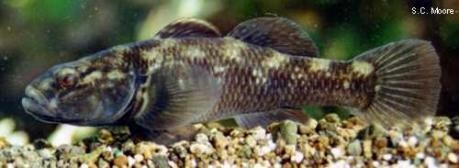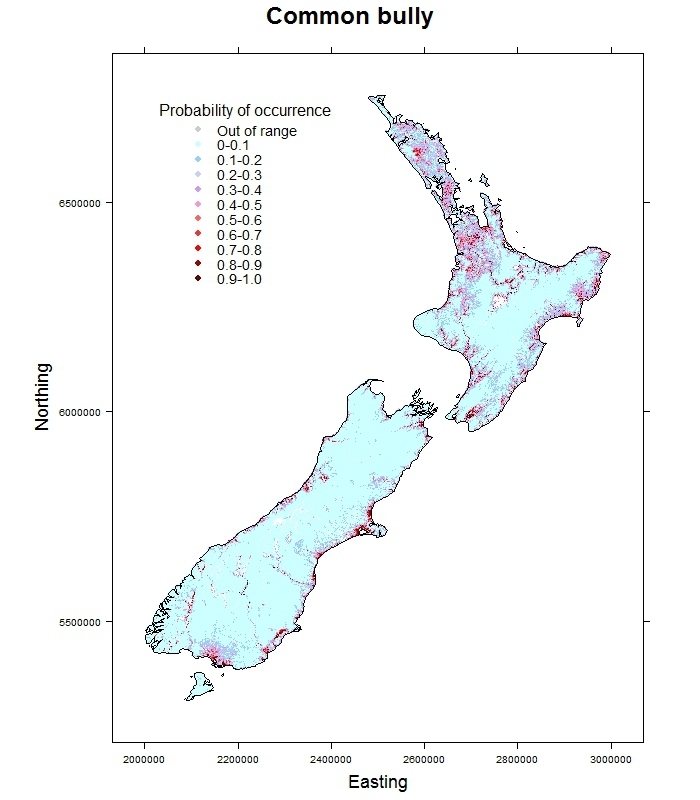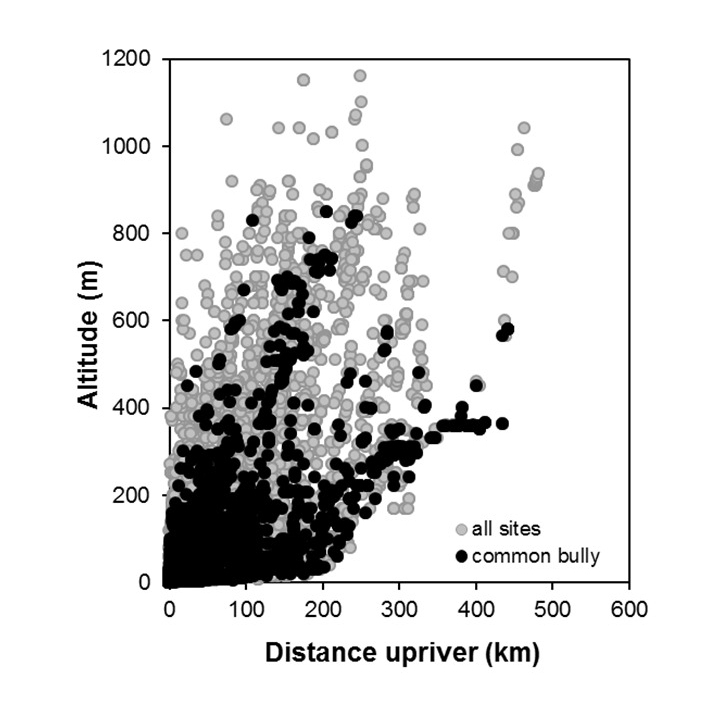Common bully
Gobiomorphus cotidianus (McDowall, 1975)

There are three other bully species that are easily confused with common bullies, and identification is difficult without a microscope. Sometimes faint vertical lines along the cheek are a good characteristic, but this is not always reliable. The location of head pores and the scale pattern on the head are used to distinguish common bullies from Crans and upland bullies, whereas the number of spines in the first dorsal fin distinguishes common from giant bullies. Both of these characteristics are difficult to see in the field. The situation is further complicated by the wide overlap in the distribution of bully species.
Common bullies are everywhere in New Zealand. Sea-going populations occur in river and streams near the coast, and land-locked populations have become established in many of our lakes where they are an important prey species for trout and eels. In rivers, they mainly inhabit still or slow-flowing waters and thus are probably one of the most likely bullies to be seen. In lakes, the larvae are planktonic and feed on zooplankton. Eggs are laid on the undersides of hard substrates (wood, rock) in both lakes and rivers, and the egg patches are defended by a male.
Apart from a few records from Stewart and Great Barrier Island, common bullies are largely confined to the mainland in New Zealand. Like all the bully species, common bullies are unique to New Zealand. Common bully can grow to a large size; specimens over 120 mm are not unusual.

![Common bully - distribution map [2024]](/sites/default/files/styles/wide/public/2024-02/Common%20bully.jpeg?itok=5MBMnGwh)

